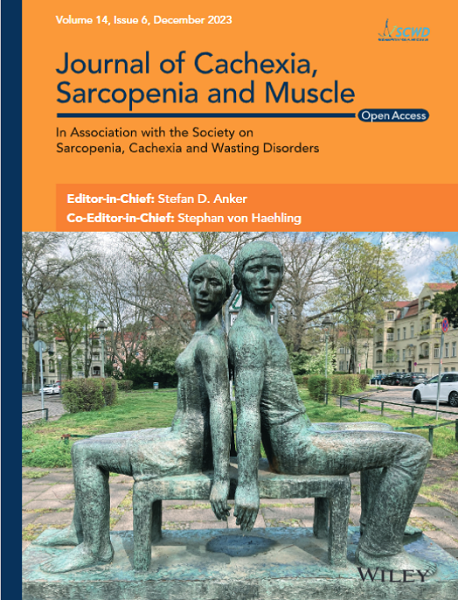Cut-Off Points for Low Relative 30-s Sit-to-Stand Power and Their Associations With Adverse Health Conditions
Abstract
Background
Despite muscle power derived from the 5-rep sit-to-stand (STS) test having been demonstrated to be a valuable biomarker in older individuals, there is limited information regarding muscle power derived from the 30-s STS test, a widely used test in the clinical setting. This study aimed (i) to compare relative 30-s STS power values between older men and women, (ii) to identify cut-off points for low relative 30-s STS power, (iii) to compare the prevalence of low relative STS power between sexes and (iv) to evaluate the association of low relative 30-s STS power with adverse conditions in older people.
Methods
A total of 1475 community-dwelling older adults (65–98 years; 45% men) from the Toledo Study for Healthy Aging were included. Relative STS power was assessed using the 30-s STS test and the Alcazar's equation. Adverse health conditions considered encompassed frailty, depression, disability in basic (BADL) and instrumental activities of daily living (IADL), cognitive impairment and low habitual gait speed (HGS).
Results
Relative STS power decreased linearly at an average rate of 1.0% year−1 in men and 1.5% year−1 in women. The cut-off points for low relative STS power were 2.53 and 2.01 W·kg−1 for men and women, respectively. The prevalence of low relative STS power was significantly lower in older men compared with older women (43.5% vs. 50.0%, respectively; p = 0.005). In men, low relative STS power was associated with frailty (OR [95% CI] = 4.4 [2.4–8.0]), cognitive impairment (OR [95% CI] = 1.7 [1.0–2.7]), disability in BADL (OR [95% CI] = 4.5 [1.5–13.8]) and low HGS (OR [95% CI] = 3.4 [1.9–5.9]). In women, low relative STS power was associated with frailty (OR [95% CI] = 5.2 [3.5–7.7]), disability in BADL (OR [95% CI] = 4.3 [1.8–9.9]) and IADL (OR [95% CI] = 3.1 [2.2–4.3]) and low HGS (OR [95% CI] = 6.1 [2.8–13.1]). No associations were found between low relative STS power and disability in IADL or depression in men, nor between low relative STS power and cognitive impairment or depression in women.
Conclusion
Relative STS power decreased with increasing age in both men and women. The provided sex-specific cut-off points for low relative STS power using the 30-s STS test adequately identified older people with frailty and were associated with an increased risk of experiencing adverse conditions.


 求助内容:
求助内容: 应助结果提醒方式:
应助结果提醒方式:


